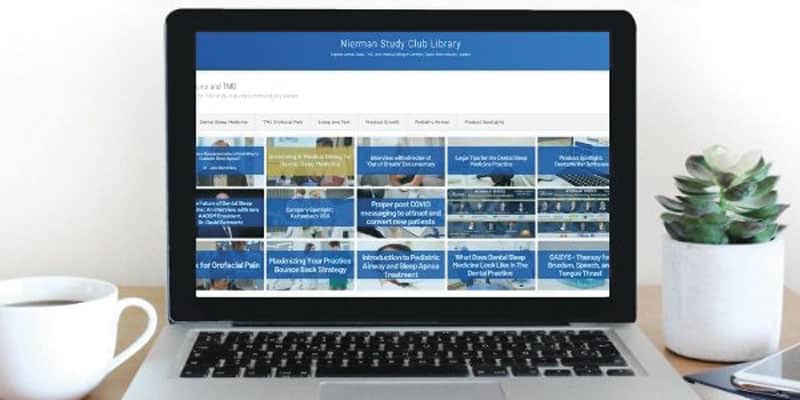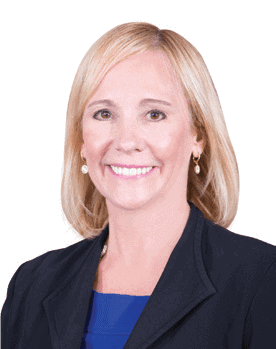Rose Nierman and Courtney Snow say that dental management software often doesn’t address the needs of the dental sleep practice. Find out how you can make dental documentation more effective.
 by Rose Nierman and Courtney Snow
by Rose Nierman and Courtney Snow
Every dental practice that embarks on the journey of implementing Dental Sleep Medicine (DSM) faces an essential decision early on. Do you try to document and bill this treatment with workarounds in your current dental practice management software, or utilize a new system focused on the medical model?
While it may be tempting to consider using the current dental practice management software system to avoid the additional costs and learning curves of a new system, many practices have found that to be detrimental to the implementation and the efficiency of day-to-day activities in a DSM practice. In short: it may cost you far more in the long run – not only dollars but also time and team frustration. The fact is that your average dental software program is designed to prove that a procedure is a dental necessity, but not a medical necessity! Successful dental practices implementing DSM and medical billing adopt the “medical model” by using a dedicated DSM health record. Years of observing, educating, and supporting the most successful DSM dental practices have confirmed that using a dedicated DSM and medical billing system or application helps practices reach the intended goals. Here are four reasons you, too, should follow the lead of the leading practices who are billing medical insurance and effectively communicating with medical community.
There are specific… elements needed for practices to get paid by medical insurance, and dental practice management software simply doesn’t address some key elements of this process.
Medical Coding & Billing is Different than Dental
Medical insurance pre-authorization requests and claims require different code sets than dental insurance billing. The claim form itself is different as well. Instead of using the ADA dental claim form, dentists must use the CMS1500 claim form. For the codes on the claim form, instead of using the CDT coding set, you must use medical coding sets ICD (diagnosis), CPT (procedure), and HCPCS (equipment/supply).
Even if the dental practice management software is equipped with the medical codes, a common complaint is the process of setting up and using the medical codes in dental software is complicated and convoluted. You may find trying to bill medical from dental software an arduous chore. Busy offices then relegate it to the dreaded backburner pile. A system designed specifically for dental practices who work with patients’ medical insurance will eliminate this pain point.
The dedicated system should simplify medical model documentation, coding, and communication with both referral sources and medical insurers. For example, the DentalWriter software by Nierman Practice Management (NPM) has been used by dental practices working with their patients’ medical insurance for over two decades. A long-time DentalWriter user who built a successful DSM-focused practice stated, “Getting involved with DSM and using the DentalWriter software are two of the best practice decisions I ever made.” NPM has done the work and figured this out so you don’t have to.
Medical Documentation is Different than Dental
DSP (Summer 2021) featured several DSM influencers answering the question, “What would you have done differently when transitioning to a DSM practice?” A common thread was setting up systems, software, and front office flow. One influencer commented, “Without the right person in the front office and the right systems, you will fail.” Another reflected, “The second thing I would have done differently is taken a high-intensity crash course in medical billing,” while another stated, “Assign a team member SOLELY responsible for overseeing the DSM portion of the practice.”
There are specific notes and elements needed for dental practices to get paid by medical insurance, and dental practice management software simply doesn’t address some key elements of this process. So, how do you focus on the medical model? Medical documentation starts with gathering the chief complaints, pertinent medical history, airway evaluation, and key exam items related to oral appliances for OSA. This medical model style of documenting your patients’ care in the SOAP format demonstrates medical necessity. SOAP notes include Subjective (complaints and history). Objective (sleep study results, dentist’s exam findings), Assessment (diagnosis), and the Plan (treatment, referrals). For example, the Dental-Writer software segments this into a 4-step process where the patient can complete the subjective portion using online questionnaires. The clinical team easily documents the objective, assessment, and plan portions. This 4-step process results in a customizable SOAP report built specifically for DSM treatment and the medical claim generated with the right codes.
Dental Notes Can Derail a Medical Pre-authorization or Claim
We’ve seen too many unfortunate situations where a dental practice attempts to send clinical notes stored in their dental practice management software to the medical insurer, only to find later that the pre-authorization request or claim was either denied as dental in nature rather than medical in nature, was lacking the necessary information to prove that the patient meets criteria to support medical necessity or was mistakenly rerouted to the dental insurance department.
In DSM, we commonly see situations in which the medical insurer denies a pre-authorization request or claim indicating “not medically necessary” or “medical necessity is not supported.” For example, did you know that to meet coverage criteria for medical coverage for patients suffering from mild Obstructive Sleep Apnea (OSA) that most medical insurers require at least one of the common comorbidities of OSA be present in their medical history? These common comorbidities typically include excessive daytime sleepiness, hypertension, impaired cognition, mood disorders, insomnia, ischemic heart disease, or a history of stroke. The health record system should ask these types of questions on the front end, so you’re not scrambling to obtain the information when the denial inevitably shows up because that information was not provided. For example, the DentalWriter software by NPM asks these questions on the front end during the first step – the online patient questionnaire.
Separate Business Entities Simplify a Future Transition to a DSM-dedicated Practice
Many dentists aspire to grow the volume of sleep patients enough that the practice can be focused entirely on DSM. There are multiple ways to do this: sell the general dentistry practice and focus entirely on sleep or delegate restorative patient care to one or more associates while you focus exclusively on sleep patients. Whichever route a practitioner takes, having the dedicated DSM health records separate from the dental records is a piece of the puzzle that will save you time, money, and hassle when getting a practice valuation. That’s not conjecture. That’s factual. If your decision is to set up a separate business entity for your sleep practice (different business name/tax ID, NPI, logos, etc.) keeping your DSM health records separate is certainly a no-brainer.
There are myriad other reasons practices should use a dedicated DSM software, but these 4 reasons alone should suffice. We encourage you to “pull the trigger” and get started now with your dedicated DSM health records. If you’ve already taken the leap – kudos to you. We hope this article helps reinforce that you made an excellent decision! If you haven’t, we’d love to learn more about you and your practice and discuss how NPM can help you successfully implement the medical model and integrate into your medical community. In short – we’d love to help you make it EASY!
Read about Rose Nierman and her 30-year career as a leader in the cross coding movement. https://dentalsleeppractice.com/leading-the-cross-coding-movement-for-over-three-decades/


 Courtney Snow is the VP of Nierman Practice Management (NPM) and a CE faculty member for NPM’s CrossCoding: Medical Billing in Dentistry seminars. She is well-known in the industry for her dedication to client success and knowledge of medical billing in dentistry including Dental Sleep Medicine, TMJ disorders and oral surgeries.
Courtney Snow is the VP of Nierman Practice Management (NPM) and a CE faculty member for NPM’s CrossCoding: Medical Billing in Dentistry seminars. She is well-known in the industry for her dedication to client success and knowledge of medical billing in dentistry including Dental Sleep Medicine, TMJ disorders and oral surgeries. As founder & CEO of Nierman Practice Management, Rose Nierman is a pioneer and icon in establishing systems, education, and training for dentists. For 33 years, Nierman’s Crosscoding; Medical Billing in Dentistry courses, DentalWriter Software, and billing services have helped thousands of dentists implement Dental Sleep Medicine, TMD, and medical billing. For more information: contactus@dentalwriter.com or 800-879-6468.
As founder & CEO of Nierman Practice Management, Rose Nierman is a pioneer and icon in establishing systems, education, and training for dentists. For 33 years, Nierman’s Crosscoding; Medical Billing in Dentistry courses, DentalWriter Software, and billing services have helped thousands of dentists implement Dental Sleep Medicine, TMD, and medical billing. For more information: contactus@dentalwriter.com or 800-879-6468.